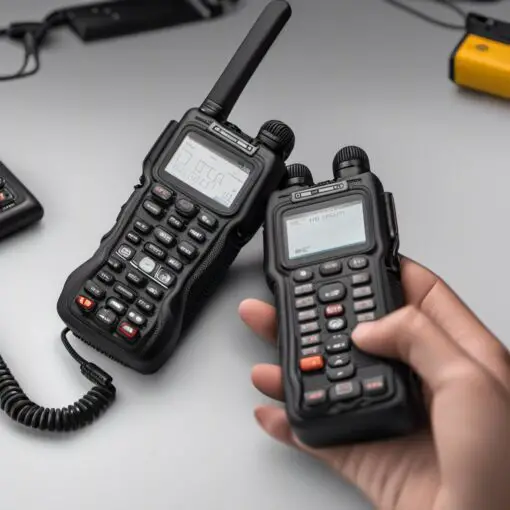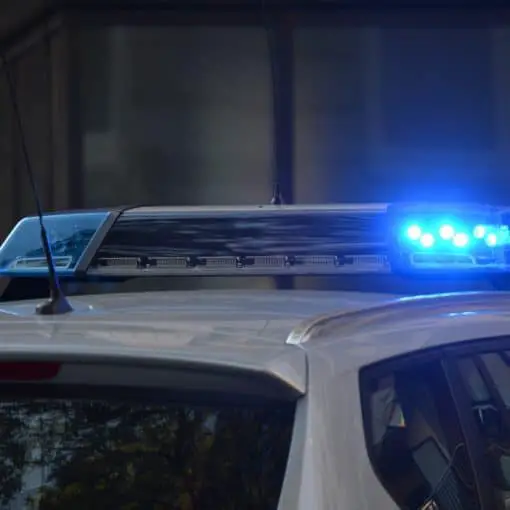Ham radio, a time-honored hobby, connects people from all corners of the globe through radio frequencies. Enthusiasts use their skills to converse with fellow operators, exchange unique postcards, and sometimes contribute to significant causes. What drives many people to take up this interesting and technical hobby?

The stories of these radio lovers often reveal a mix of curiosity, dedication, and community spirit. From making lifelong friendships to playing crucial roles in emergencies, their experiences are rich and varied. These narratives shed light on the enduring appeal and diverse impact of ham radio.
1) Connecting Across Continents: A Journey to Friendship

Ham radio has brought many people together from different parts of the world. One example is Jane from the United States, who connected with Hiroshi, an operator in Japan.
Jane started her amateur radio journey eager to meet new people. She found herself chatting late one night with Hiroshi, sharing stories about their cultures.
Despite living thousands of miles apart, Jane and Hiroshi quickly formed a strong bond. They discussed their favorite hobbies and even helped each other practice new languages.
Their friendship grew over the years, transcending the traditional barriers of distance and time. Ham radio provided them with a unique platform to stay connected without using the internet or phones.
They even participated in radio contests together, competing as a team despite being on different continents. These events deepened their connection and gave them shared goals.
Through regular communication, they also exchanged gifts and holiday wishes. Jane eventually visited Hiroshi in Japan, where they celebrated their shared passion for ham radio in person.
This journey to friendship shows how ham radio can bridge gaps between people from different cultures, creating lasting relationships.
2) “The Power of Morse Code” – Chris Johnson
Chris Johnson, a dedicated ham radio enthusiast, has been using Morse code for over 30 years. His love for this old communication method began when he was a teenager. He believes Morse code is timeless and powerful.
Chris often shares how Morse code helped him connect with people from different parts of the world. Once, during a severe storm, Chris received a distress signal. He assisted in coordinating a rescue operation, showcasing the true power of this classic code.
His passion for Morse code even reached local schools. Chris volunteers to teach students the basics, emphasizing its importance and utility. Many of his students remain inspired, even building their own small transmitters.
Through his efforts, Chris has kept the spirit of Morse code alive. He often says that the simplicity and reliability of Morse code can bridge gaps where modern technology fails.
3) Rescuing Sailors in Distress
Ham radio operators have often played crucial roles in rescue missions. One such case happened in the middle of the Pacific Ocean. Two Canadian sailors found themselves nearly 2,000 miles west southwest of the Galapagos Islands in a dire situation.
Watchstanders at the 11th Coast Guard District Command Center received a notification from a ham radio operator. Emergency signals from the stranded sailboat were intercepted, triggering a response from nearby vessels.
Good Samaritan sailboats ultimately located the distressed sailboat. The efforts of amateur radio operators, who relayed vital information and the sailors’ coordinates, proved essential in the swift rescue operation.
In another remarkable incident, the Pacific Seafarer’s Net assisted in rescuing sailors from a sinking sailboat. Daily roll-calls conducted by this network keep track of maritime amateur radio operators sailing on the Pacific. Thanks to their vigilance, the sailors were quickly identified and rescued.
These stories showcase the vital role ham radio enthusiasts play in ensuring the safety of sailors. Their timely actions and communication skills often make the difference between danger and safety. This network of dedicated individuals continues to provide an invaluable service in times of need.
4) Building Community in Remote Areas
Ham radio enthusiasts in remote areas often rely on their radios to stay connected. This technology helps bridge distances that other forms of communication cannot cover.
In some regions, cell phone signals and internet connectivity are unreliable or nonexistent. Ham radio operators use their equipment to communicate with each other, sharing news and assisting during emergencies.
For instance, the Cascade Amateur Radio Enthusiasts showcased the ability of ham radios during a Field Day event. This event demonstrated how ham radios provide essential communication when other systems fail.
These operators often connect with people in far-off places, fostering a sense of community. They can share experiences, give support, or simply enjoy a chat, no matter how isolated they are geographically.
Ham radio’s ability to operate during natural disasters also makes it invaluable. In remote areas, where traditional communication lines are down, ham radio operators step in to provide much-needed communication links for rescue and relief efforts.
By keeping these communities connected, ham radio enthusiasts play a key role in building and maintaining bonds across vast distances.
5) Hurricane Maria: Lifesaving Communication
When Hurricane Maria devastated Puerto Rico in 2017, traditional communication networks were knocked out. Phone and internet services were unavailable. Amid this chaos, ham radio operators stepped up to provide vital communication links. They connected with the rest of the world and coordinated rescue efforts.
The Red Cross called on ham radio enthusiasts for help. They needed 50 experienced radio operators to manage emergency communications. These operators relayed messages between Puerto Rico and mainland United States, ensuring that aid could reach those in need.
One notable operator, Zulma Dueño, provided critical support from her home in Utuado, Puerto Rico. She was trapped for a week after the storm but later used her skills to help her community. Her story showcases the resilience and importance of ham radio during disasters.
Other operators, like those mentioned by Vice, also played key roles. They connected the Caribbean islands, sharing crucial information about conditions and needs. This helped coordinate relief efforts across the region.
Ham radio was more than a hobby during Hurricane Maria; it was a lifeline. These dedicated individuals ensured that communication remained possible even when all other systems failed. Their efforts saved lives and highlighted the importance of amateur radio in emergency situations.
6) “From Isolation to Interaction” – Emily Davis
Emily Davis started her ham radio journey in a remote village. At first, she felt isolated, with few opportunities for social interaction. The radio became her lifeline.
Through ham radio, Emily connected with people from different parts of the world. Each conversation was a new experience, offering her a glimpse into diverse cultures and traditions.
She found joy in teaching others about ham radio. Emily’s efforts helped build a local community of enthusiasts. Her village, once isolated, became a hub of interaction and learning.
Emily’s story shows how technology can bridge gaps. Her experiences on the airwaves transformed her life, turning isolation into an opportunity for meaningful connections. More information on the influence of communication tools like ham radio on isolated communities can be found in this book.
7) The Antarctic Adventures of a Ham Operator
In 1956, Jules Madey, a 16-year-old ham radio operator, engaged in an Antarctic expedition. Jules and his younger brother, John, were known for their passion for radio-control airplanes.
At Palmer Station in Antarctica, ham radio has been a constant presence since the mid-1960s. Operators from around the world connect through the radio waves, sharing knowledge and support.
The Palmer Station operators even established contact with astronauts on the ISS. These connections helped foster international communication and collaboration.
Ham radios at Palmer have allowed for 24-hour satellite access since September 2002. This continuous access has transformed the way operators communicate and share information.
Steve Wozniak, the co-founder of Apple, gained his early electronics skills through amateur radio. His story shows the potential of ham radio to inspire innovation and creativity in unexpected ways.
These stories showcase the unique experiences of ham operators in the remote and challenging environment of Antarctica. Ham radio continues to play a vital role in fostering global connections and advancing communication technologies.
The Global Reach of Ham Radio
Ham radio enthusiasts connect people from different cultures and take part in international events. These activities demonstrate the power of ham radio to create community and showcase skills.
Cross-Cultural Communication
Ham radio allows people to communicate across borders and time zones. Operators can talk to others in countries like Mexico, Japan, and South Africa. This communication enables people to share experiences, learn about different cultures, and make friends worldwide.
One example is Larry Mitchell, who has made contacts in many countries, including Morocco and Iceland. By connecting with diverse places, ham radio operators expand their knowledge and understanding of global perspectives. This fosters mutual respect and enriches their personal and radio experiences.
Participating in International Events
Ham radio operators often take part in international events like Field Day. These events give enthusiasts the chance to showcase their skills and systems. Field Day, for instance, is held annually and attracts participants from around the world, including events in Chico, California and Winnipeg, Manitoba.
Such events help operators test their equipment and techniques under different conditions. They also allow for the exchange of knowledge and the celebration of ham radio’s role in international communication. This builds a sense of community among participants, regardless of their location.
Community and Camaraderie
Ham radio brings people together, offering a space for friendship and teamwork. Many enjoy joining clubs and collaborating on projects.
Joining Ham Radio Clubs
Joining a ham radio club can be a rewarding experience. These clubs are often the heart of the ham radio community, providing a space where members can share their passion for amateur radio.
Members often gather for meetings, where they discuss the latest developments in the world of ham radio. Newcomers find a supportive environment, as experienced hams are eager to share their knowledge and help others learn.
Clubs also organize events like field days and contests. These activities offer a chance for members to practice their skills, compete in a friendly environment, and enjoy each other’s company. It’s a great way for enthusiasts to stay engaged and motivated.
Collaborative Projects
Collaborative projects are another cornerstone of the ham radio community. These projects range from building and maintaining radio repeaters to organizing emergency communication networks during natural disasters.
Working on these projects helps hams develop technical skills and fosters a sense of accomplishment. It also builds strong relationships, as members work closely together to achieve their goals.
Additionally, these projects benefit the wider community. For instance, setting up emergency communication systems ensures that people stay connected during crises. This public service aspect adds an extra layer of meaning to the hobby, making it more than just a pastime.
Frequently Asked Questions
Ham radio enthusiasts have achieved remarkable feats, contributed to emergency response efforts, and forged lasting global friendships. They have also advanced technology and played vital roles in scientific research.
What are some remarkable achievements by ham radio enthusiasts internationally?
Ham radio operators have facilitated communication in remote areas, providing a lifeline during disasters. For example, during Hurricane Maria, they set up networks to relay vital information, helping coordinate rescue and aid efforts.
How can ham radio be used during emergency situations across the globe?
Ham radio is invaluable during emergencies. Operators can quickly establish communication networks when traditional systems fail. They assist in rescue operations, as seen in Hurricane Maria, where operators relayed information between the affected areas and emergency services.
What are the most surprising contacts made using ham radio?
One of the most surprising contacts occurred when an operator in the United States communicated with a researcher stationed in Antarctica. Such unexpected connections highlight ham radio’s global reach and its ability to foster unique interactions.
How has ham radio culture fostered global connections and friendships?
Ham radio brings people together across continents. Enthusiasts share their experiences and cultures, building friendships. For instance, the story of Chris Johnson and his use of Morse code demonstrates this, as his passion connected him with fellow operators worldwide.
What advancements in technology have ham radio operators contributed to?
Ham radio operators have contributed significantly to advancements in communication technology. They have developed new transmission techniques, experimented with digital modes, and even assisted in the early development of the internet. Their innovations continue to influence modern communication.
In what ways have ham radio operators assisted in scientific research and data collection?
Operators participate in various scientific endeavors by sharing atmospheric data, assisting in satellite communication, and providing real-time observations for meteorological studies. Their contributions have been crucial in projects that require reliable and immediate data transmission from remote locations.





